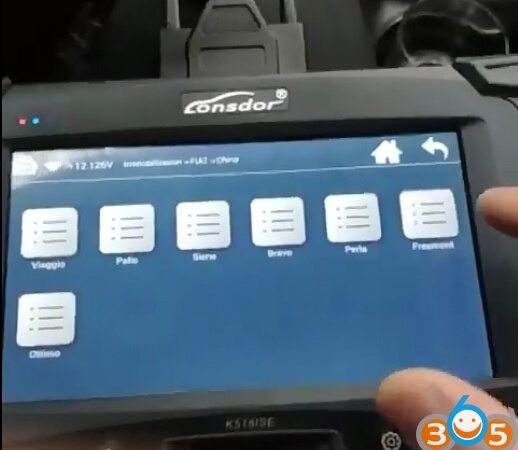Automotive diagnostics should be performed in an orderly manner and should not depend on guesswork, taking chances or even educated guessing. Let’s try an example of the above process using a common car. A flashing check engine light requires an immediate car diagnostic. Visit Firestone Complete Auto Care to check engine codes and repair the problem. Common Engine Problems & Symptoms. Fix your engine problems at Firestone Complete Auto Care. Find out what's causing the engine knocking sounds and the car.


Car Diagnostic Tools


Diagnostic Tool For Automobile Computer
Performing a car diagnostic can reveal a number of problems associated with the transmission, oil tank, gas tank, exhaust system and other components of the vehicle. Modern vehicles designed with computer processors, microchips and sensors can be linked to a car diagnostic computer scan to pinpoint exactly where the problem exists. The scans are performed at a dealership or at the garage of certified mechanic. Some scans can be performed at home using a hand-held scanning device.
History
According to popularmechanics.com, in 1996 the EPA mandated that the computer interface of all vehicles sold in the United States had to meet the On-Board Diagnostics, version II (OBD II) standard. This meant that aftermarket repair shops would be able to diagnose a problem in the vehicle using only one set of tools and running a simple computer scan. This is now known as the car diagnostic test; the process involves producing a complete report with a set of codes that pertain to different problems.
Effects
The car diagnostic can tell you the following about the vehicle: ignition timing issues, level of buildup in the combustion engine, fuel injector performance, whether the ignition coils are firing, engine rpm levels, air and coolant temperature, crankshaft and camshaft position and the throttle opening. After the car diagnostic is performed, the computer will tag each data point to reveal what needs to be corrected and stores this code so that the technician can look in a specific area for the problem.
Common Diagnostic Codes
According to Car2Pro.com, OBD II diagnostic trouble codes can range from P0100 to P1899. Each letter and number in the code represents a different part of the vehicle. The first letter is often a “P,” which relates to the power train. If it is a “B,” it will relate to the body, a “C” relates to the chassis and a “U” is undefined.
The number zero in the second placeholder is a generic code shared by all manufacturers, but some manufacturers use a specific code here so the number 1 may appear. The third placeholder determines the area of the problem. A 1 means there is a fuel or air problem; 2 means there is something wrong with the injector circuit; 3 means there is an ignition problem or the engine is misfiring; 4 means there is an emission control problem; 5 means there is a vehicle speed or idle control problem; 6 means there is a computer or output circuit problem; a 7 or an 8 means there is a transmission problem. The fourth and fifth digits of the computer diagnostic check report further identify which system is malfunctioning; the digits that appear here vary by vehicle make, so the mechanic running the test may need to contact the dealership or do some research on what the rest of the code means.
Costs
The price of an average car diagnostic can range from $20 to $400 depending on the type of scanner used and the make and model of the vehicle, according to popularmechanics.com. Consumer code readers are available, but these only provide limited information on the source of the problem.
Benefits
Performing a car diagnostic test using an auto scan tool can save the mechanic a lot of time troubleshooting a problem and also save the car owner money because they don’t have to pay for a complete mechanical check at their local repair shop. When the “Check Engine” light appears in the dashboard, the car owner has no idea what could be causing the problem. Running a computerized car diagnostic check can highlight the problem so that the mechanic can fix only what needs to be fixed. Most car diagnostic checks can be performed in under an hour.
Whether working on cars is a hobby or a cost-driven necessity, most DIYers and backyard mechanics are better off with inexpensive alternatives to expensive professional tools. There are some good tools that can interface with your computer, phone, or tablet.